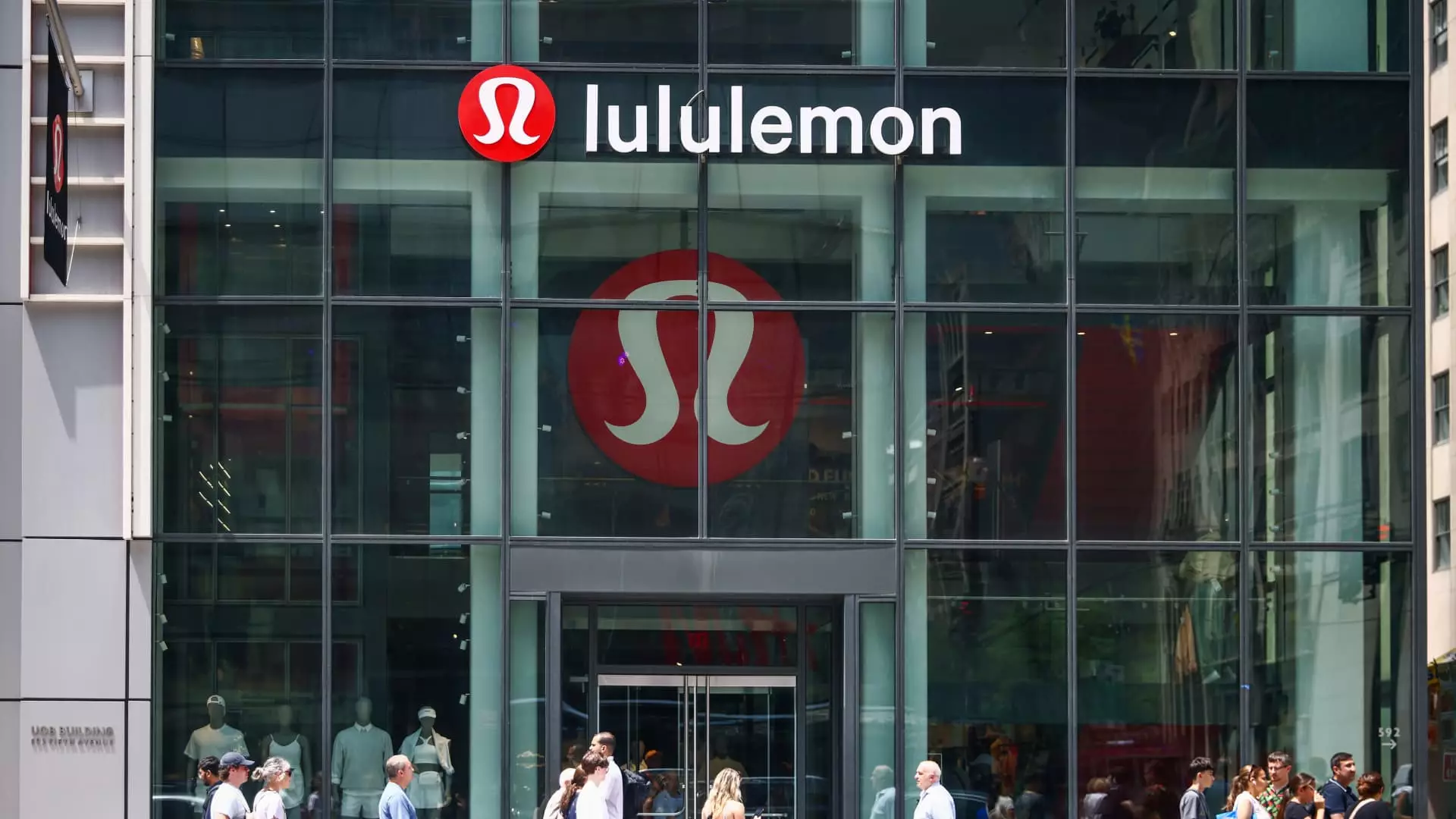Lululemon Athletica, the revered sportswear giant, recently showcased impressive fiscal fourth-quarter results that exceeded Wall Street expectations. With earnings per share of $6.14—surpassing the anticipated $5.85—alongside revenues of $3.61 billion against predictions of $3.57 billion, one might assume Lululemon had much to celebrate. Yet, the underlying narrative is not so rosy. Investors reacted to a pragmatic yet disappointing forecast for 2025, resulting in a notable drop of more than 6% in shares during extended trading hours. This reaction underscores a critical truth in the financial world: past performance does not guarantee future success.
The Numbers Tell a Complicated Tale
Lululemon’s fourth-quarter revenue of $3.61 billion marked an increase from $3.21 billion in the same quarter the previous year, a significant achievement. Additionally, the company reported a full-year revenue rise to $10.59 billion for 2024, up from $9.62 billion the prior year. However, the inclusion of an extra week in its fiscal calendar—the 53rd week—creates an illusion of growth that must be critically analyzed. When adjusted, the revenue figures indicate an 8% year-over-year increase, a number that would delight many companies, yet still points to a potential cooling in consumer enthusiasm.
In a landscape where consumer priorities have been shifting, the mere existence of growth is not enough to quell fears. Analysts anticipated a more robust performance in comparable sales, which rose only 3% year-over-year during a period when expectations were set at 5.1%. Even more alarming is the stagnant growth in the Americas, with international sales being the sole bright spot, soaring by 20%. This duality indicates an underlying issue; while Lululemon has a strong foothold overseas, its domestic market is showing signs of fatigue.
Setting the Stage for a Dismal 2025
For many observers, Lululemon’s full-year 2025 revenue guidance, projected to be between $11.15 billion and $11.30 billion, was a disheartening surprise, particularly when weighed against the consensus estimate of $11.31 billion. This minor discrepancy may seem negligible, but in the cutthroat arena of retail, even the slightest miss can precipitate significant repercussions, as evidenced by the recent drop in stock value.
The question that arises from this situation is whether Lululemon can maintain its brand allure amidst changing consumer behaviors and heightened competition. With e-commerce and digital sales shaping the modern retail landscape, stagnation in comparable sales domestically raises more flags than it potentially raises hope. Moreover, as economic pressures loom large, will consumers continue to invest in premium athleisure wear? The trajectory for Lululemon hinges not just on overcoming these short-term hurdles, but on revitalizing its appeal to increasingly discerning shoppers.
Ultimately, while Lululemon’s past successes shine brightly, the future remains fraught with uncertainty and challenges ahead. An earnest re-evaluation of strategies may be required, lest the company risks losing its standing as a paragon of the activewear industry.

